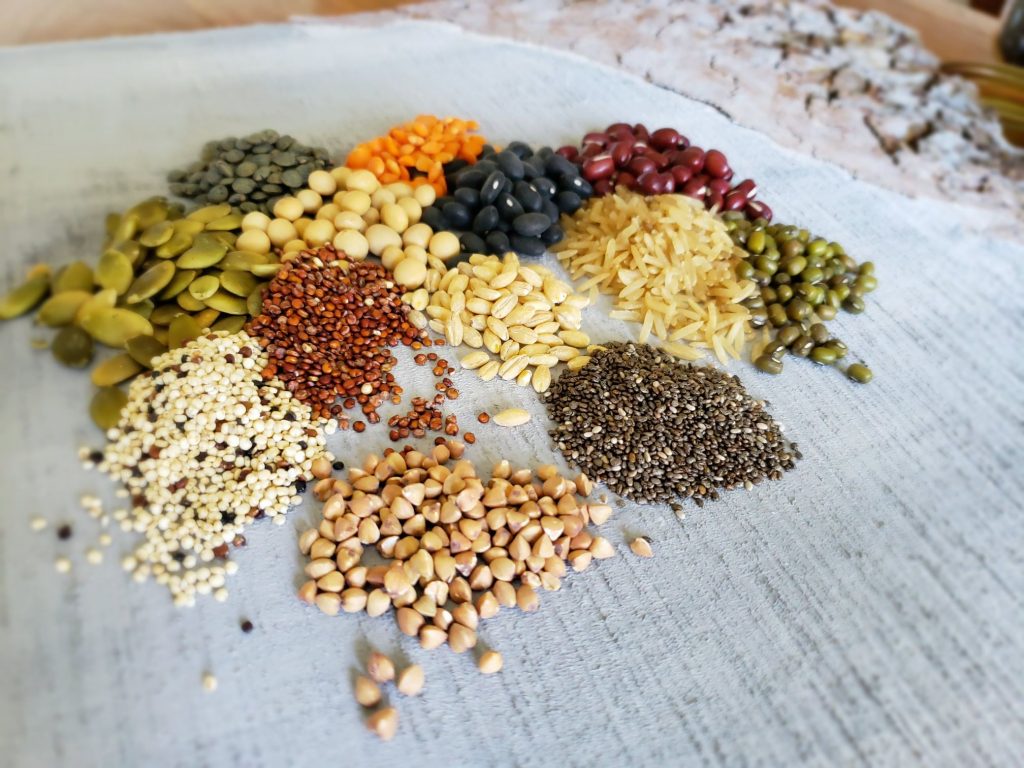Where do you get your protein?

The answer is, “The same place gorillas and elephants and cows get their protein, from plants!” Plants all have amino acids, the building blocks of all proteins. There are nine essential amino acids that must be obtained from diet, the rest the body manufactures from those. If a person is eating enough food and a variety that includes vegetables, legumes, seeds, nuts, grains and fruits, they will likely be getting enough protein. But some of us love to know the ‘BEST’ place, so here is a list of the ‘complete’ foods, which contain all 9 of the essential amino acids:
Quinoa 8 grams in 1 cup cooked
Buckwheat 6 grams in 1 cup cooked
Soy 20 grams in 1 cup firm tofu (the harder the tofu, the higher the protein)
30 grams in 1 cup tempeh
16 grams in 1 cup edamame
Chia seeds 2 grams per tablespoon
Pumpkin seeds 12 grams per tablespoon
Beans + rice B=average 16 grams in 1 cup cooked + R=average 5 grams in 1 cup cooked
Barley + lentils B=23 grams in 1 cup cooked + L=17.9 grams in 1 cup cooked
The pairing of beans + rice and barley + lentils is because they each have some of the essential amino acids, and put together, not only are they tasty but they compliment each other in supplying all the essential amino acids needed. They don’t have to be eaten together, but if they are eaten separately in 24 hours, it covers all the bases.
As for how MUCH protein a person needs, take your IDEAL weight times 4 and divide by 10. (.8 grams/kilo of body weight) and the USDA’s general recommendation is for men, 56 grams and for women, 46 grams. Americans are often eating animal-derived foodstuffs three meals a day, which amounts to a greatly elevated protein intake daily. Due to advertising, Americans tend to focus too much on protein intake and not enough on other things, like fiber, which is severely lacking in the SAD (Standard American Diet).

